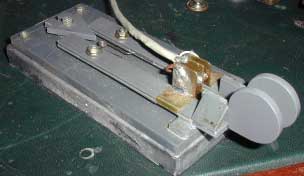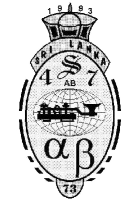The Art of CW
The Art of this fascinating mode of communication. Propably the oldest Digital Mode
1000+ already viewed!
Article Summary
It took many years, many years for me to learn the art of it. That is even after passing the CW test at the Ham Radio exam. Passing a test means nothing until you get to fall in love with it.
Still I am not a genius but I like to place a few words here about how I stated to like it….
Article Highlights
- Inspiration for the CW mode
- Homebrew CW keyer

Kamal Edirisinghe
4S7AB / KA5MAL
Author Feb 2010
Having More than 35 years of experience in the Field of Amateur Radio, I have published many articles in prestigious international publications like, QST, CQ-DL, NCJ, Six-News etc.. Here in this web site, these write-ups are intended to give you knowledge about my designs and projects related to the hobby. The articles about foreign HAM activities are intended to share my experience.
- Full Solar Powered Radio Station
- SO2R and Multi-Multi Compatible
- Operate on All Bands/Modes/SATS
- DXCC #61,271
- IOTA AS-003, CQ-22, ITU-41
I passed the CW test 12 WPM for my General class license in 1992. My code guru was 4S7KG Kule. He is a great straight key operator and still one of the best in Sri Lanka. I still can remember he got us concentrated into water drops falling from a leaking rain pipe…’tok’…..’tok’…..’tok’…..’tok’….and so on. That was the basis for letter spacing. Tnx to Kule’s efforts, I got through the test at once. But after obtaining the General class license, I was not operating CW at all. SSB was the priority and it was 99%.
After few years, I have almost forgotten my morse code and I didn’t care at all since the SSB worked well with my mono-banders and barefoot.
In 2000, I had to go to Norway and Sweden for higher studies. There I had no mono-banders but a simple vertical and a barefoot rig borrowed from local hams. Usually I was on the other side of the pile-up and trying to break it using this simple setup. It never succeeded. I am hearing the 4S7 boys loud and clear, but they don’t hear my poor signal !!! What a disappointment.
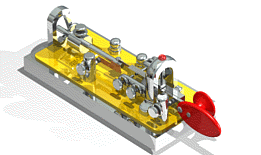
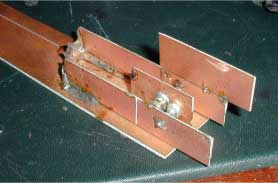
Key made out of throw-away PCBs in Sweden (2000)
Then I thought of making a paddle for my built-in keyer in order to give a last try. I was able to find some throw-away PCBs from my company lab and made a keyer paddle myself. It was not perfect, but I had enough contact cleaner in my office there HI!
Initially it was very slow ‘LID’ type sending and receiving. But interestingly I was able to make some real Dx contacts on CW. Even I was able to break some pile-ups directed towards some VU2 stations. This was getting more and more interesting. My CW ability went up day by day and I worked Dx from Sweden almost everyday after work. HSCW at 100 WPM and even more was tried out but that is all machine to machine.
When I came back to Sri Lanka in 2002, I was very confident about my CW and went on calling CQ on CW rather than on SSB. Then came the next challenge of handling pile-ups on CW. This is not easy and one needs years of practice. Before 2000, 99 % of my QSOs were on SSB. After 2000, 87% of my QSOs are on CW. The art of CW should be mastered and not learned. It’s like a meditation in one way which needs a lot of mind focusing for minutes and minutes and then for hours.
One has to really master the art of CW in order to become successful. It is not written anywhere. It is not punching dots and dashes and decoding the same. The power of the CW signal is unbelievable. It’s ability to pass through QRM, QRN and low propagation regions is remarkable. Whenever the SSB portions are dead on a band, you can still hear some keys alive.
In my understanding, the CW lies in between analog and digital domains. Human ear cannot decode digital PSK or ThorB signals but the bottom line is the CW signal. It has the desirable qualities of a digital signal like the noise immunity, narrower power spectral density but it is still an analog signal made by human hands.
Nowadays, there is a big ‘voice’ going around the world to throw away Morse code from ham radio exams. But if you feel the taste of it, you will never want to throw it away. And it will have it’s own place forever.

The contacts are made from normal nuts & bolts.
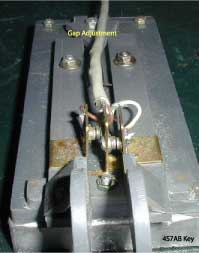
Keyer paddles home-brewed in Sri Lanka using PVC. Base is made out of melted battery lead.
